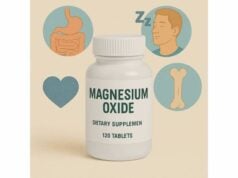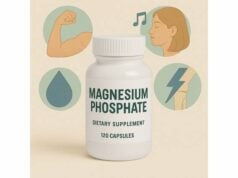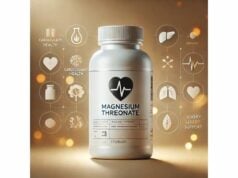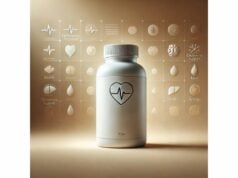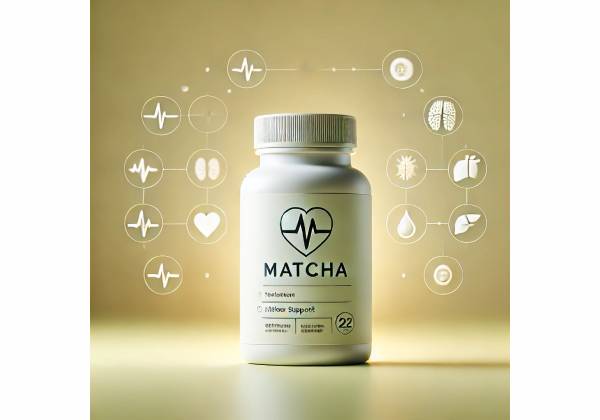
Matcha is a finely milled green tea powder with a concentrated mix of antioxidants (especially EGCG), natural caffeine, and L-theanine. Because you drink the entire leaf suspended in water or milk, matcha delivers more polyphenols than a typical steeped tea. Many people choose it for steady focus, small but meaningful cardiometabolic benefits, and a clean, fresh flavor that works in both traditional tea and modern lattes or smoothies. This guide translates the science and the craft into clear steps: how matcha is grown and processed, what benefits are realistic, how to use it day to day, how much to take, what to avoid, and which safety rules actually matter. You will find practical brewing instructions, dosage ranges in grams and milligrams, and troubleshooting for bitterness, clumping, or poor sleep. You will also see where the evidence is strongest (lipids, glycemia, attention) and where it is more tentative (long-term cognition, weight loss). If you like details and simple instructions you can act on today, you’re in the right place.
Essential Insights
- Regular use may modestly improve LDL-C, total cholesterol, and aspects of attention and alertness.
- High-dose green tea extracts can stress the liver; the tea beverage is generally well tolerated.
- Practical intake: 1–2 g matcha per day (≈35–90 mg caffeine; ≈85–170 mg catechins).
- Avoid or limit if pregnant, very caffeine-sensitive, on nadolol, atorvastatin, or raloxifene, or with liver disease.
Table of Contents
- What is matcha, exactly?
- What benefits are realistic?
- How to use matcha each day
- How much matcha per day?
- Common mistakes and fixes
- Who should not take matcha?
- What does the evidence say?
What is matcha, exactly?
Matcha is powdered green tea made from shade-grown leaves (usually the Tencha cultivar) that are de-veined, de-stemmed, and stone-milled to a talc-fine powder. Shade cultivation for several weeks before harvest raises chlorophyll and L-theanine while preserving delicate aromatics. Unlike steeped tea, you ingest the whole leaf when you drink matcha, so you consume a concentrated spectrum of bioactives: catechins (notably EGCG), caffeine, theanine, rutin, quercetin, vitamin C, and chlorophyll. This whole-leaf delivery explains why a small serving goes a long way.
Two quality markers matter to the home user. First is color: high-grade matcha shows a vivid, luminous green, signaling abundant chlorophyll and careful shading. Dull olive or yellow-green often hints at older leaves, excess oxidation, or poor storage. Second is particle fineness: true stone-milled matcha feels like silk, sifts easily, and whisks into a stable foam. Grittiness means coarse grinding that resists suspension and leaves sediment.
You will see two broad grades. “Ceremonial” is chosen for straight tea (usucha or koicha); it is sweeter, less astringent, and whisks into a creamy microfoam. “Culinary” is tuned for lattes, baking, and smoothies; it is more robust and can stand up to milk, sugar, or heat. Neither label is regulated, so trust sensory cues—color, aroma (fresh, marine, sweet-grassy), and mouthfeel—over marketing.
What’s inside a typical 1–2 g serving? Caffeine commonly ranges about 18.9–44.4 mg per gram of powder. L-theanine varies by cultivar and harvest, but a 2 g serving often provides roughly 20–50 mg. Catechins as a group can approach 85–170 mg in 2 g, with EGCG as the dominant fraction. Ratios matter: theanine tempers caffeine’s edges, which is why many people describe matcha’s “calm focus” as distinct from coffee’s jolt.
Matcha is not the same as green tea extract capsules. Extracts may concentrate EGCG to hundreds of milligrams per pill; that potency has benefits in trials but also a higher risk of gastrointestinal upset or liver enzyme elevations at large doses. By contrast, beverage matcha is distributed across water with fiber, amino acids, and other plant compounds that may increase tolerability. Treat them as different tools for different goals rather than interchangeable options.
Finally, storage affects everything you taste and feel. Light, heat, oxygen, and humidity degrade catechins and aroma. Buy in small tins or pouches, keep them sealed and refrigerated after opening, and aim to finish within 4–8 weeks. If your matcha suddenly tastes flat or bitter despite proper temperature, it is usually staleness or hard water minerals, not your whisking technique.
What benefits are realistic?
Think “modest, meaningful, and cumulative” rather than “miracle.” The best-documented benefits of green tea polyphenols—and by extension matcha—sit in cardiometabolic health and cognitive performance under everyday conditions. Across randomized trials, green tea interventions have shown small reductions in total and LDL cholesterol, slight improvements in fasting glucose or HbA1c, and tiny decreases in diastolic blood pressure. These changes are not dramatic on their own, but over months they add up, especially alongside diet quality, fiber intake, and physical activity. If you are already near goal, expect fine-tuning; if you are far from goal, matcha is an adjunct, not a fix.
On cognition and mood, the combination of caffeine and L-theanine consistently improves measures of attention, vigilance, and reaction time in demanding tasks. Many users notice smoother alertness and fewer “jitters” than coffee at similar caffeine intakes. For day-to-day life, that translates into a better morning work block, a more focused lecture, or a steadier pre-workout groove. Early clinical work with matcha itself suggests potential support for aspects of social cognition and sleep quality in older adults when used regularly over months. Those results are encouraging but should be viewed as complementary to sleep hygiene and exercise rather than replacements.
What about weight loss? Green tea catechins and caffeine can slightly raise fat oxidation and may nudge waist circumference down in some trials, but the effect size is small. Without an energy deficit and adequate protein, you will not see major changes. Where matcha shines is as a swap: replacing sugary drinks or high-calorie coffee concoctions with a lightly sweetened matcha latte reduces net calories while preserving a pleasant ritual and mild appetite control.
For oral and skin health, catechins show antimicrobial and anti-inflammatory properties in vitro and in small trials. Swishing a cooled, unsweetened matcha tea after lunch is gentle on enamel and breath. As a topical ingredient, green tea extracts appear in many cosmetics; however, topical outcomes are outside this beverage-focused guide.
A realistic timeline: within minutes, caffeine and theanine raise alertness. Within days to weeks, you may notice steadier energy and fewer afternoon crashes. Over 8–12 weeks, cardiometabolic markers can show small shifts if your overall diet and movement are consistent. Over months, the habit becomes most valuable as part of a heart-smart pattern rather than a standalone therapy.
Set clear expectations: matcha helps best when it replaces less healthy beverages, anchors a mindful break, and nudges you toward a routine of hydration and movement. It is not a substitute for statins, antihypertensives, or sleep, but it may make a healthy lifestyle easier to keep.
How to use matcha each day
Start simple and make it a ritual you enjoy. The technique matters as much as the tea.
- Choose and store
Pick a fresh, vivid-green powder with a harvest or “best by” date. For straight tea, choose a ceremonial style; for lattes or baking, a culinary style works well. Store sealed in the refrigerator after opening and aim to finish within 4–8 weeks. - Measure and sift
For a classic bowl (usucha), measure 1–2 g (about 1/2–1 level teaspoon). Sift through a fine mesh to break clumps. Sifting helps even expensive matcha whisk into a fine foam and prevents pockets of bitterness. - Heat water correctly
Use 70–80 °C water (160–175 °F). Boiling water scorches catechins and amplifies bitterness. If you don’t have a kettle with temperature control, boil and then wait 2–3 minutes. - Whisk well
Add a splash of warm water to make a smooth paste, then add 60–80 ml (2–3 oz) more and whisk in quick “M” or “W” motions for 15–20 seconds until the surface looks glossy with tiny bubbles. A bamboo chasen is traditional; a small handheld frother also works. - Adjust strength
For a stronger, syrupy style (koicha), use 3–4 g in 30–40 ml water and knead gently rather than foaming. For a lighter cup, stick to 1 g and 90–120 ml water. Taste and tune across a few days. - Latte route
Whisk 1–2 g matcha with 30 ml warm water, then top with 150–200 ml warmed milk or a fortified plant milk. Sweeten lightly if needed. Oat and soy provide body; dairy yields a classic café texture. Keep added sugar modest. - Iced and on the go
For cold matcha, shake 1–2 g with 250 ml cold water in a bottle for 30–45 seconds. Add ice and lemon if you like. For travel, pre-portion 1–2 g in small packets. - Timing in your day
Use matcha in the morning or early afternoon to avoid sleep disruption. Many find 30–60 minutes before focused work or a workout ideal. If you’re caffeine-sensitive, stick to 1 g and pair with food. - Pairings and cautions
If you struggle with iron deficiency, avoid drinking matcha with iron-rich meals; have it between meals to reduce interference with non-heme iron absorption. If you take medications with specific timing, keep your matcha away from those windows unless your clinician advises otherwise. - Beyond the cup
For baking, mix 1–3 teaspoons per batch of muffins or cookies; flavor and color are heat-stable enough for short bakes. In smoothies, 1–2 g blends well with banana, yogurt, or avocado without much bitterness.
A tiny investment in technique pays off: correct water temperature, sifting, and whisking turn astringency into creamy, sweet-grassy structure. Once the motion is second nature, your daily bowl becomes both a steadier caffeine source and a pleasant cue to slow down.
How much matcha per day?
Dose depends on your goal, caffeine sensitivity, and how matcha fits your routine. Think in grams of powder, but also translate that into approximate caffeine, catechins, and theanine so the numbers make sense.
A practical default for most adults is 1–2 g daily. That range usually supplies about 35–90 mg caffeine, roughly 85–170 mg total catechins (with EGCG as the main fraction), and around 20–50 mg L-theanine. Many people feel a smooth alertness at 1 g; others prefer 2 g for a more noticeable lift. If you already drink coffee, start at 1 g to gauge sleep and mood.
Upper sensible limit for daily matcha as a beverage is about 3–4 g if you are not caffeine-sensitive and your sleep is unaffected. That would still keep most people under the general 400 mg/day caffeine limit across the whole diet, assuming you are not layering multiple coffee servings, energy drinks, or pre-workouts. Track total daily caffeine from all sources, not just matcha.
For specific outcomes:
- Focus and study: 1–2 g about 30–60 minutes before a task often pairs well with a protein-rich snack. If you want the “calm focus” profile, avoid adding a lot of sugar.
- Pre-workout: 1–2 g 45 minutes before training provides a steady lift for most; iron athletes should keep it away from main iron-rich meals.
- Cardiometabolic support: beverage approaches are long game habits. One to two grams daily, consistently for 8–12 weeks, alongside fiber-rich meals and movement, is a reasonable pattern. Extract trials often use higher catechin doses than a cup of matcha provides; do not try to match supplement doses with excessive tea.
- Sleep-friendly routine: keep matcha before 2 p.m. If afternoon tea is a must, stick to 0.5–1 g and monitor sleep latency and nighttime awakenings.
Safety guardrails:
- Caffeine: Most healthy adults can include up to 400 mg/day from all sources. Matcha typically contributes a fraction of that, but individual sensitivity varies. If you feel anxious, shaky, or notice palpitations, reduce the dose or shift it earlier.
- Liver health: The beverage is generally well tolerated. High-dose green tea extracts (especially ≥800 mg EGCG/day) are more likely to elevate liver enzymes; avoid self-escalating to supplement-level intakes with concentrated powders. If you have known liver disease, consult your clinician and stay conservative.
- Pregnancy and lactation: Keep daily caffeine moderate; a small 1 g serving (often under 50 mg caffeine) may fit, but discuss total intake with your obstetric provider. For infants sensitive to maternal caffeine, adjust timing or skip.
Finally, consider a two-week experiment. Pick a dose (1 g or 2 g), keep it at the same time each day, and track sleep, energy, focus blocks, and digestive comfort. Small adjustments—dropping 0.5 g, moving the time, or changing water temperature—often solve issues without abandoning the habit.
Common mistakes and fixes
Matcha rewards small details. Most problems—bitterness, clumping, flat flavor, or poor sleep—come from fixable mistakes. Use this quick troubleshooting map.
- Overheating the water
Problem: Bitter, sharp, or drying cup.
Fix: Use 70–80 °C water. If you boiled it, open the kettle and wait a couple minutes. Lower temperature reveals sweetness and umami. - Skipping the sift
Problem: Stubborn clumps that resist whisking and burst as bitter pockets.
Fix: Sift 1–2 g through a tea strainer or fine mesh before whisking. If you lack a strainer, mash small amounts against the bowl with the whisk to form a paste, then thin. - Old or poorly stored powder
Problem: Dull color, hay-like aroma, weak foam, wan flavor.
Fix: Buy smaller tins, store sealed in the fridge after opening, and finish within 4–8 weeks. Keep a spare in the freezer unopened for later. - Hard water minerals
Problem: Astringent edge, muted aromatics.
Fix: Try filtered or soft water. Even a countertop filter often improves taste foam. - Whisking technique
Problem: Large bubbles, no foam, uneven taste.
Fix: Start with a paste, then whisk briskly near the surface in zig-zag motions for 15–20 seconds. Finish with a gentle circular stroke to tighten the foam. - Oversized lattes
Problem: Sugar crashes or excess calories obscure benefits.
Fix: Use 1–2 g matcha with 150–200 ml milk, keep sweetener minimal, and skip extra syrups. If you crave texture, choose milk foam over sugar. - Bad timing for sleep
Problem: Trouble falling asleep or frequent awakenings.
Fix: Move your serving earlier (before noon or early afternoon) or cut to 0.5–1 g. Track sleep for a week after changes. - Iron absorption concerns
Problem: Iron deficiency is not improving.
Fix: Avoid drinking matcha with iron-rich meals; place it between meals and add vitamin C-rich foods to iron-containing meals to boost absorption. - Interactions with medicines
Problem: Reduced drug levels or unexpected effects.
Fix: Some teas can affect drugs like nadolol, atorvastatin, or raloxifene. Keep matcha away from medication windows unless your clinician clears it, and report any new symptoms. - Choosing by marketing, not sensory
Problem: Paying more without better results.
Fix: Prioritize fresh, bright color; sweet-grassy aroma; and fine texture. Read harvest info if provided. If a tin tastes flat, try a different vendor or grade rather than forcing it.
Small refinements combine into a reliably excellent cup. Once you dial in water, dose, and whisk, the habit becomes easy to sustain and far more pleasant than a rushed, lukewarm mug.
Who should not take matcha?
Most healthy adults can enjoy matcha in modest daily amounts, but certain groups should avoid it or use it cautiously. Use this section as a starting point for a conversation with your clinician.
Avoid or limit:
- Pregnancy and breastfeeding
Keep daily caffeine moderate. A small serving (about 1 g) may fit within many care plans, but align intake with medical advice. Caffeine crosses the placenta and enters breast milk; some infants are sensitive. - Children and teens
Caffeine needs careful supervision in younger people. If used at all, keep portions small and infrequent, and avoid with sugary additives. - Significant caffeine sensitivity, panic disorder, or uncontrolled anxiety
Even matcha’s theanine-buffered profile can trigger palpitations, tremor, or restlessness in sensitive individuals. Try 0.5 g or choose caffeine-free rituals. - Insomnia or irregular sleep
If sleep is fragile, keep matcha to the morning, or choose caffeine-free alternatives. Prioritize sleep stability over any putative benefit of afternoon tea. - Liver disease or history of herb-induced liver injury
The beverage is generally well tolerated, but concentrated green tea extracts at high doses have been linked to elevated liver enzymes. Stay conservative and avoid supplements unless your specialist agrees. - Cardiovascular arrhythmias or uncontrolled hypertension
Caffeine can raise heart rate and blood pressure in some people. If your clinician has asked you to limit or avoid caffeine, follow that guidance. - Iron-deficiency anemia
Catechins can inhibit non-heme iron absorption when consumed with meals. If you are correcting iron deficiency, have matcha between meals or skip it temporarily. - Interacting medications
Green tea can reduce blood levels of certain drugs (for example, nadolol) and may interact with others, including atorvastatin and raloxifene. If you take cardiovascular, endocrine, or neurologic medications, confirm compatibility and schedule with your clinician or pharmacist.
Practical safety rules:
- Introduce matcha slowly: start at 1 g daily for a week before increasing.
- Keep total daily caffeine under your personal threshold and below widely used 400 mg/day guidance for most healthy adults.
- Stop and seek care if you notice dark urine, jaundice, right-upper-quadrant pain, or persistent nausea after starting new high-dose tea products or supplements.
- Prefer beverage forms over high-dose extracts unless supervised in a trial or clinical protocol.
When in doubt, err on the side of a smaller serving and earlier timing. The point is a calm, sustainable lift—not a struggle with side effects.
What does the evidence say?
A large human evidence base exists for green tea and its extracts; direct matcha studies are emerging but smaller. Here is a concise, people-first summary to guide expectations.
Cardiometabolic outcomes
Systematic reviews of randomized trials indicate small but statistically significant improvements in lipid profiles and glycemic markers with green tea interventions. Typical pooled effects include reductions in total cholesterol (on the order of ~7–8 mg/dL), LDL cholesterol (~5–6 mg/dL), and minor improvements in fasting blood sugar and HbA1c. Blood pressure effects are modest, with the clearest signal in diastolic pressure. These shifts are clinically modest yet meaningful across months, especially as part of broader diet and activity changes. Most trials use extracts or multiple daily cups; a consistent daily serving of matcha can be one practical way to participate in this pattern.
Cognition and sleep
The caffeine-theanine pairing has repeatedly improved attention and vigilance in controlled settings. Matcha-specific research has begun to test longer-term use. A recent randomized trial in older adults followed participants for 12 months and found improvements in certain aspects of social cognition and a trend toward better sleep quality, although primary global cognition measures did not change significantly. The practical takeaway: matcha may help you feel and perform better on attention-heavy tasks, and steady use might support aspects of cognitive aging, but it is not a standalone therapy.
Weight and metabolism
Green tea components can raise fat oxidation and slightly reduce waist circumference in some trials. The effect is small and depends on total energy balance. For real-world outcomes, matcha serves best as a replacement for sugary beverages, preserving a satisfying ritual while trimming calories.
Dosing and safety thresholds
For beverages, typical daily EGCG exposure is well below levels that have raised liver enzymes in supplement studies. Safety evaluations have flagged increased risk at high supplemental intakes (around or above 800 mg EGCG/day), especially taken fasting. Beverage matcha used in culinary or tea contexts is generally safe when consumed at traditional amounts. For caffeine, keeping total daily intake at or below 400 mg for most healthy adults is a widely used benchmark; many people will remain far under that with 1–2 g matcha.
Interactions and special populations
Authoritative health agencies highlight potential interactions with a few medications and urge moderation in pregnancy and lactation due to caffeine. If you have a complex regimen, it is wise to schedule matcha away from medication times and to bring it up during visits.
In short: the science supports matcha as a helpful daily habit for alertness and small cardiometabolic improvements, with an excellent safety profile at beverage doses. Expectations should stay grounded: benefits are modest, accumulate with consistency, and become most valuable as part of a broader healthy pattern that includes sleep, movement, and nutrient-dense meals.
References
- Scientific opinion on the safety of green tea catechins 2018 (Guideline)
- Spilling the Beans: How Much Caffeine is Too Much? 2024
- Green Tea 2025 (Guideline)
- Effect of matcha green tea on cognitive functions and sleep quality in older adults with cognitive decline: A randomized controlled study over 12 months 2024 (RCT)
- The effects of green tea supplementation on cardiovascular risk factors: A systematic review and meta-analysis 2023 (Systematic Review)
Disclaimer
This article is for educational purposes only and does not provide medical advice. It is not a substitute for professional diagnosis, treatment, or individualized recommendations. Always speak with your qualified health care provider before starting, stopping, or changing any supplement, including matcha, especially if you are pregnant, breastfeeding, have a medical condition, or take prescription medicines.
If you found this guide useful, consider sharing it with a friend or on Facebook, X (formerly Twitter), or your preferred platform, and follow us for future updates. Your support helps us keep creating clear, evidence-based resources. Thank you.

